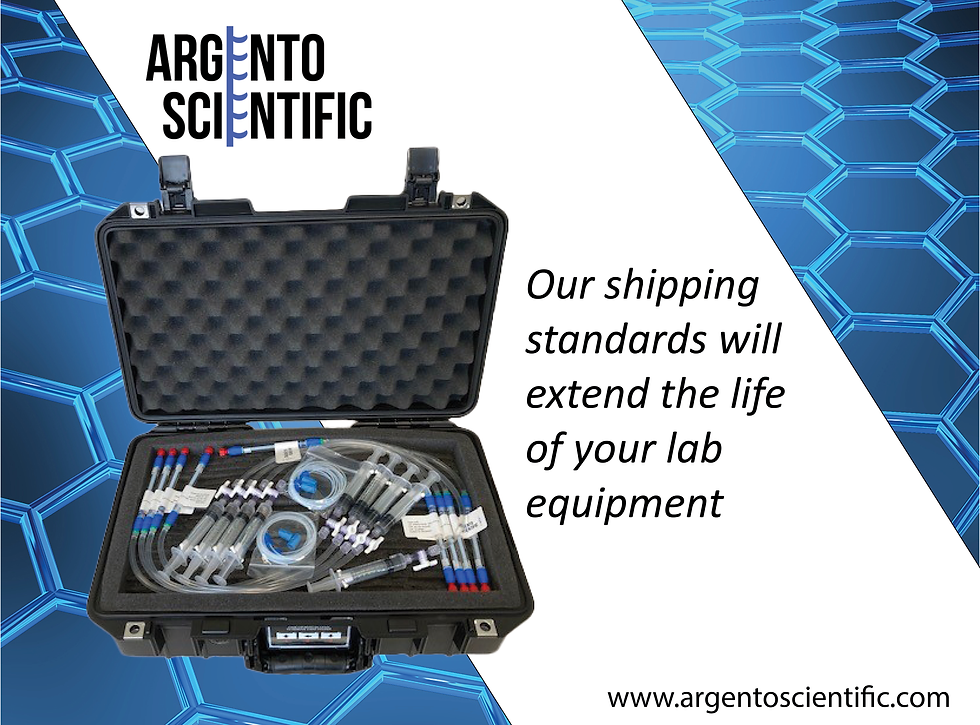When it Comes to Science, Size Matters
- adrian6524
- Feb 28, 2023
- 3 min read
Updated: Mar 3, 2023
In 1999 the $125 million dollar Mars Climate Orbiter, already 10 months into its flight towards Mars, broke into pieces and burned up. Why? Because of a miscommunication between two design teams. One team used metric units to measure acceleration and the other used imperial units.

Returning to Earth and to the more mundane world of protein chromatography, we often see similar confusion albeit on a less expensive scale. I’m referring of course to M6 and ¼-28 fluidic connections!

M6 and ¼-28 threaded nuts are hard to tell apart. Also, the picture above makes them look big, but these fittings are less than 2cm (1 inch) long.
If you’ve ever connected 1/16” or 1/8” fluoropolymer tubes in an analytical instrument, you’ve probably used one of these fittings. The fittings are used to compress a conical ferrule around the tube to create a high pressure, low carryover fluid connection.

The M6 designation refers to the outer diameter of the threads being 6mm, and it’s a metric standard. ¼-28 is an imperial thread and the numbers refer to ¼ inch outer diameter and 28 threads per inch.
Why does this matter? Akta™ systems with are commonly used for protein purification, are made in Sweden and they adhere to metric standards. Omnifit columns, which are often used on Akta systems, are made in the UK and they follow imperial standards. In fact of the two thread types, the ¼-28 is far more common on analytical instrumentation in general.
An M6 fitting will screw part way into a ¼-28 port, and vice versa. If you don’t know that the two types of fittings exist you might try to screw the wrong nut into the port harder. These threaded nuts are often made of plastic, and so are the ports they screw into. So demonstrating your awesome finger strength by screwing down the fitting as hard as you can will rapidly strip your fitting. More importantly, you can also strip the port of your $500 valve.
Here is an example of a ¼-28 port on the end of an Omnifit column.

The blue cap is removable and to make things easier, Omnifit columns come with two types of caps. One cap (dark blue), has a ¼-28 port and the other (light blue), has an M6 port, as shown below.

Omnifit columns also come with ready-made tubes. These tubes have ¼-28 nuts on one end and 10-32 nuts on the other and shown here.

This brings us to more types of connectors:
10-32 - Narrow body, often referred to in Akta literature as “1/16 tubing connector”. This is the type of connector that is used to connect to the valve on the Akta system. 10-32 fittings are often used to connect to HPLC columns and they normally are used with 1/16” TUBING
M6 – Metric thread, used on some Cytiva columns. M6 nuts can accommodate both 1/16” and 1/8” tubing
¼-28 – Imperial thread, used on Omnifit columns and widely in analytical instrumentation for fluid connections with 1/16” and 1/8” tubing
5/16-24 – Large thread nut shown in picture below, used with 3/16” tubing. 3/16” tubing is not common in diagnostic and analytical instrumentation and neither is this size of connector. It is used widely on Akta systems.
This picture below shows the 4 main types of connectors used with Akta systems:

Although some of this may sometimes seem like rocket science, Argento Scientific is here to guide you through the critical decision points that will best suit your purification project needs at your lab. Contact us to find out more about our products and services.





Comments